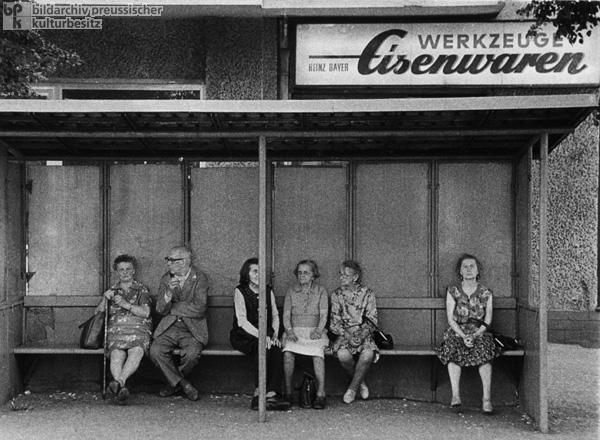













INTRODUCTION | DOCUMENTS | IMAGES | MAPS | EDITOR
|
The labor shortage in the GDR meant that, in addition to women, the government also tried to attract people of retirement age to the workforce. Nonetheless, the number of employed pensioners declined both in absolute terms and as a percentage of the GDR’s retirement-age population: in 1972, for example, 677,000 pensioners were employed (22.7% of the pensioner population), whereas only 265,000 were employed in 1988 (9.9%). The People’s Solidarity organization oversaw the recruitment of pensioners; it also tried to compensate for the shortage of places in old people’s homes and nursing homes by arranging social activities for the aged, as well as ambulant care. Although the Five-Year Plan of 1981 to 1985 aimed to increase the capacity of residential and care facilities by 18,000-19,000 places, shortages remained a problem until the end of the GDR. In 1989, more than 160,000 applications were filed for places in these facilities. Photo by Volker Döring.
© Bildarchiv Preußischer Kulturbesitz / Volker Döring |
 print version
print version return to image list
return to image list previous image
previous image
